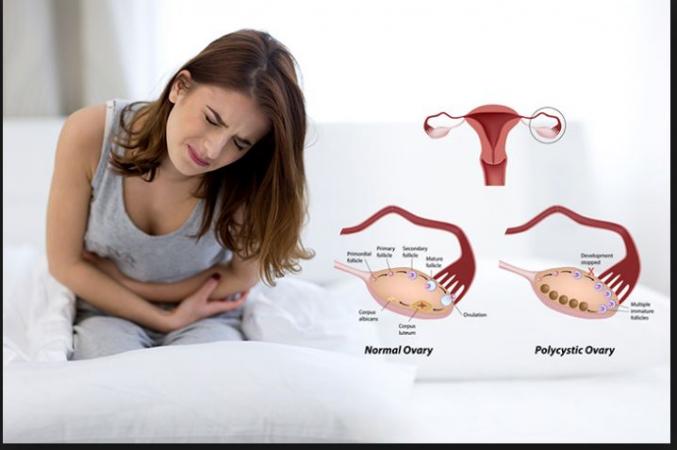
Ovarian cysts can happen due to a number of reasons and are of different types. Most of the time ovarian cysts produce no symptoms at its onset. But at times there can be signs that could indicate a problem within:
Pain in the abdomen: ‘With a cyst in the ovary usually women complain about lower abdominal pain,’ says Dr Mehta. The pain can be due to rupture of the cyst, rapid growth, bleeding of the cyst or because of torsion i.e., if it rotates on its own axis.
Menstrual abnormalities: It might be tough to gauge the presence of cysts due to menstrual irregularities or abnormalities as it could also be indicative of other health conditions. ‘But usually with cysts it is possible that you may experience delayed periods, heavy bleeding due to a rupture of cyst or you may suffer from dysmenorrheal or painful bleeding due to endometriosis,’ says Dr Mehta. There can be a lot of reasons that could lead to menstrual irregularities, know more about this condition and when to reach out for your doctor.
Pain in the genitals: ‘With a condition like endometriosis one can also experience some pain in the rectum area during menstruation. Also it can be painful during a sexual intercourse,’ says Dr Mehta. If a cysts presses on the urinary bladder it can also lead to painful urination or urine retention. Genital pains could also indicate other problems, know if this could be indicative of other health crisis like an STD.
Other physiological symptoms: Ovarian cysts can also lead to abdominal swelling or fullness. If the cysts interfere with hormone producing capacity of the ovaries it can lead to facial hair growth as well.
Infertility: ‘A condition like endometriosis which can lead to polycystic ovarian syndrome (PCOS) can also lead to infertility issues in women. Often a treatment for infertility brings to notice an underlying condition like PCOS,’ points Dr Mehta. Also read 5 ways how obesity can lead to infertility.
also read Why Indian women are at high risk of Diabetes? Read here complete detail
How is the presence of ovarian cyst diagnosed?
An ovarian cyst can be diagnosed in the following ways:
A physical examination: If you experience any of the above mentioned symptoms your doctor might first do a physical examination to ascertain the same.
Ultrasound: ‘An ultrasound is the best way to determine the position, size and severity of a cyst present anywhere on the ovaries,’ says Dr Mehta.
CT scan: ‘A CT scan would be further done to differentiate a benign cyst from the malignant one to assure the right treatment for the same,’ says Dr Mehta.
MRI: An MRI is also an effective way to have a look at the cysts to ascertain their nature, severity and growth.
Blood test: ‘A CA-125 marker test is done to check for the potentiality of cancer due to ovarian cyst,’ says Dr Mehta. CA-125 blood testing can be used as a marker of ovarian cancer, but it does not always represent cancer. It may be normal in the presence of malignancy too. CA-125 is a protein that is elevated in the bloodstream of approximately 80% of women with advanced ovarian cancer. If the report indicates the chance of a cancerous cyst, further screening for cancer is recommended.
How is ovarian cyst treated?
The treatment of ovarian cyst depends on three factors: The age of the women, the size of the cyst, and its appearance on ultrasound.
Medical observation: If a woman is in her early 40s or younger with regular menstrual cycles, most of the cysts developed would be physiological in nature like follicular cysts or corpus luteum. They usually don’t have any medical consequences and would disappear on their own. ‘For women who are in their 20s and 30s these cysts are observed for some time to verify if they disappear on their own,’ Cysts that are benign are usually closely monitored unless they call for emergency attention like surgery.
Surgery: Both malignant and begin tumor would need surgical intervention. If a benign tumor ruptures and bleeds it would call for an emergency. If diagnosis shows the presence of a malignant tumor or cyst a surgery is always recommended to stop further spread of the condition. ‘A cyst is usually removed laproscopically after complete examination and requisite tests done to ascertain its severity,’
also read Breast cancer: everything needed to know about it, symptoms and treatment